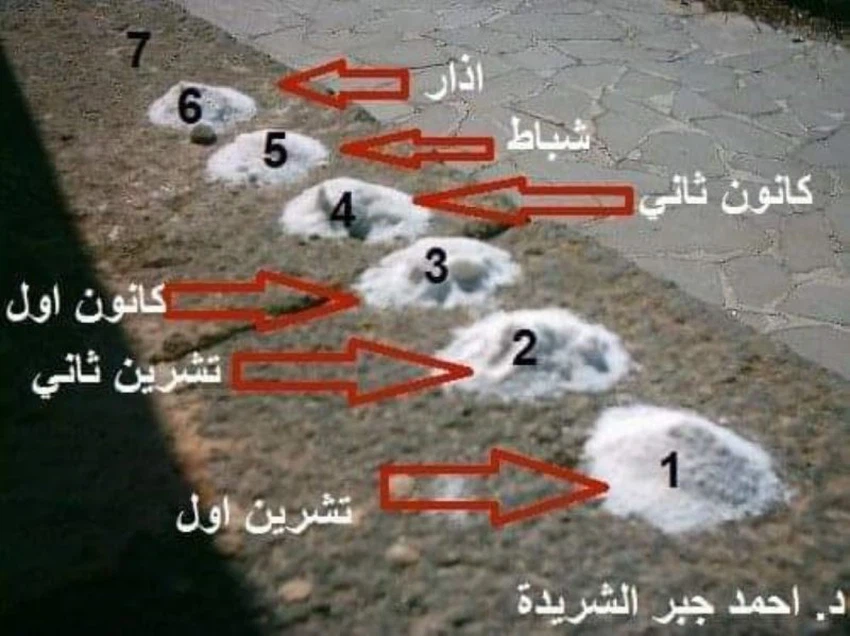Predicting the rainy season using salt on the night of the autumnal equinox.. How is that?
Arab Weather - It is customary in the Levant countryside to predict climate conditions using "rock salt" to know the climate conditions of the year in terms of the amount of rainfall. It is also called "Bawahir", based on the exploration of the expected weather conditions monthly. The elderly used to wait for the night of September 21, the night of the annual autumnal equinox, to implement this traditional method.
You may also like:
The use of salt in folklore to predict the weather and the amount of rainfall
How to perform the Bawahir process
The elderly place (8) equal piles of “natural rock salt” on a basalt surface (not affected by moisture), each handful equal to one winter month, which are as follows: 1- October, 2- November, 3- December, 4- January, 5- February, 6- March, 7- April, and 8- May (see the attached picture). When they wake up early in the morning, they go to see the small salt piles, they start counting from October, and so on. If one of these salt piles changes color and its water flows, it is a month with abundant rains, and they can know which months have winter and which have weak winters by the amount of moisture in the salt. If all the piles are slightly damp, the year will be dry. In other words, the salt piles are monitored before dawn the next day (and if the salt is solid, the cold will be severe, and if the salt melts, the month holds abundant rains, and if the salt does not change, the weather will be clear).

This traditional custom of natural salt is very old, socially and culturally inherited for hundreds of years. It is subject to conditions, the first of which is that the person who should put the salt must have a name that no one else has in the village, the second is that the salt should be placed exclusively on a basalt stone because it is the stone that is completely impervious to moisture, and the third is that the salt should be placed on the night of September 21, and most importantly, that he has faith. In the early morning, the vision of the fall and winter months becomes clear. This method relied on extrapolating seasonal and annual weather conditions, which may sometimes extend to a whole year to help them in agricultural activities and harvesting the crop, as some people still care about it. Our ancestors relied on it before the existence of satellites, climate analyses, and weather stations, and it was often accurate.
But due to the changes that have occurred in the climate and the changes that are happening today, this annual climate tradition has declined, as the time of the sixties and seventies of the last century is different due to the absence of the phenomenon of climate change and global warming at that time.
This method was implemented in the countries of the Levant, Jordan, Palestine, Syria and Lebanon.
See also:
How did our ancestors use salt to predict rain in September?
Arabia Weather App
Download the app to receive weather notifications and more..



